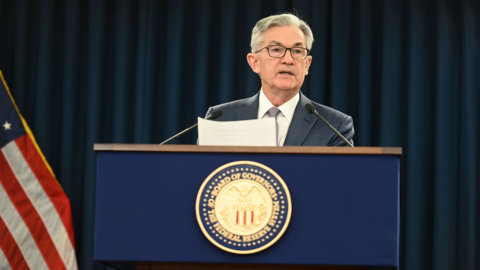Many have been talking about the land for some time now, when the matter of wine and gastronomy is tackled. But when you find yourself in Pompeii discussing about the land, well, it gets challenging: you run the risk of capitulating to clichés or worse, to banalities that the mass tourism tradition of this archaeological site asks for.
But this danger certainly does not occur if you sit at the President’s dining tables, which is the slightly misleading name of an elegant restaurant located at a stone’s throw from the Sanctuary. The one and only Haute Cuisine Restaurant of Pompeii is excellently managed by Paolo Gramaglia, starred chef in his fifties, helped by his wife, Laila Buondonno, professional lawyer and expert sommelier who turned to tbe Food Side, now she welcomes customers according to the principle that whoever crosses the threshold of the President (we’re still talking about the restaurant here) should be put at ease from the very first moment and listened to even when nothing is spoken: “Our goal is to satisfy his/her needs, even before they are expressed”.
Might be because of the influence of the Vesuvius volcano but it is certain that Paolo Gramaglia is an eruption of southern Italian cheerfulness, his eyes speak for him, always behaving nicely either you talk about food, or about your wife, your family, Campania region, or even about Pompeii. In short, he is what can be called a happy man and his cheerfulness is transmitted in his way of cooking. The meeting with Gramaglia is humbly surprising. One imagines to find a starred chef who celebrates his dishes with austere and solemn air but…no way! Gramaglia, when having a break, would take the time to approach you, look at your plate and accompany you on a long journey that from the President’s muffled rooms goes back in time, from the daily gastronomic life of the ancient Pompeii, to foods that were also eaten by the Ancient Romans, to the cultivations and the products of this territory, because Gramaglia is indeed a multifaceted man.
To better explain the concept we need to start talking about his early studies. His bigger passion at school was mathematics, he studied in a scientific High School called Federico II. Ending up obtaining a bachelor’s degree in Tourism Sciences. Mathematics made him understand that things must be done according to defined processes, doing this eventually will lead to the solution to any kind of problem: this was the most important lesson that he has learned in his education. Then comes the family, to whom he is very close. You might call him a legacy. Simultaneously with his studies, he began working in the restaurant that his father and mother had opened near the excavation site and by that time he already understood that his future would have been working in the kitchen rather than taking a desk job. Of course we must also mention the passion for refined eating. It is no coincidence that when Gramaglia received his first salaries, the first thing that came to his mind was to allow himself a lunch in a Michelin 3-Star restaurant to see with his own eyes what was happening up in gourmet paradise. Last but not least the passion for Archeology plays a big role.
Anyone would say, it’s easy for a child used to be walking among the most famous archaeological ruins in the world to develop a big passion for archaeology. But Gramaglia is not a man of mere contemplation. Gramaglia with his rational mathematical mentality wished to know deeply that world of “suspended animation” tragically created by the eruption of 79 B.C., which he got just nearby home, to the point that in a short amount of time he received appreciation for his research regarding the food use of the Ancient Romans also from the Bureau of Antiquities that asked for his collaboration in various projects. His theme nights, “the ancient Pompeian’s kitchen”, held inside Pompeii’s excavation site, are usually full house and requests of participation come from all over the world. Gramaglia’s historical-gastronomic itineraries also continue at other times in his restaurant, with evenings dedicated to the Borboni family, ancient Italian Maritime Republics and aphrodisiac food.
The big jump happens in 2006. His parents take a step back, it is up to him to collect the baton of the family restaurant now. And here all those elements that have shaped him up to that moment, the time spent in the kitchen next to the parents, the mathematical studies, the passion for archaeology, and the interest in quality cooking mix together: his guts tell him that he cannot bask in the management of an ordinary restaurant business. The desire to build a high quality project pushes him to put to good use all that he has learned so far. The search for raw ingredients and niche products becomes imperative for him.
History and archaeology also enter the “equation” of his project. Mix up all these ingredients, season with a touch of Mediterranean sunny disposition, and you will get as a result a restaurant that in a few years got awarded the Cappello de L’Espresso, the Forks of the Gambero Rosso, high scores from both the Touring’s restaurants Guide and the Routard, then finally in 2016 also with the coveted Michelin Star. An achieved goal to which he has been working for year after year, once he confided to his wife: “Either sooner or later I conquer the Michelin or completely quit being a chef.” In short, the ex young boy knew his stuff.
Sitting at the President’s tables transmits delightness and delightful are the dishes he proposes, combining, in a successful equation (ah, maths once again!), past, present and future because as he likes to say, “The success of gastronomy lays in tradition free of any melancholy “. But he also adds in some cases a pinch of exoticism in addition to technology that for the Chef “represents the bridge that connects the past to the future”. And from this very bridge you can look out for a fascinating Amberjack Carpaccio sphere, with concentric slices of lemon emulsion and fruity extra virgin olive oil, chinotto shards and buffalo mozzarella, or for an intriguing “geographical” dish possessing a name which pays homage to the relationship between history and land: “From Paestum to Cetara”, a Beaten Buffalo Steak with pepper, served with salted anchovies, mixed salad and cherry vinegar, where it’s possible to perceive the passion of this chef while combining fusion of different culinary cultures with tradition, surprisingly reaching quite the harmonious result.
And now let’s present the appetizers. We can continue with “The chicken that thought of being able to fly”, which means, Cappellacci Pasta with “alla cacciatora” chicken filling, Parmigiano cheese mousse, alla cacciatora sauce, black truffle and ginger. Among the second courses reigns “The lobster drunk in plain sight” which is a Steamed Lobster with hints of wine, caviar sauce, guacamole sauce, palmito and citrus. Among the desserts one truly to remember is the “Cassata Oplontis”, lustful tribute to the unraveled relics of the nearby archaeological site.
In short, the President Restaurant flies high in the panorama of local restaurants which is still so behind, not understanding that nowadays the tourist is less naive and calls for quality. And in this regard you can have fun participating in the Ancient Romans themed dinners, organized from time to time by Gramaglia. The feeling is that of being in a kind of time machine able to go back through the centuries. The first surprise comes along with the bread of the Ancient Romans (he also wrote a book about the topic), the customer can choose between seven different types: Panis Primarius, it constituted the patrician welcome, made using white flours that came from the East by sea and extra virgin olive oil from Magna Grecia, then we have the Siligineus: a bread of extremely white flours (about 3 thousand specimens of these loaves have been found in the ovens of the ancient Pompeii), after comes the Semidarius, and so on with the Adipatus baked along with pig fat, let’s continue with the Artalaganus: bread with raisins, spices and honey, and in the end there’s the Vulgaris (in Latin the word vulgaris has the meaning of perverted, for sure it must be a very exciting bread).
The customer can continue the meal with “Gustum”, the appetizer made up of various local cheeses that Gramaglia goes personally to look for in the countryside, favouring the shepherds who still produce them as tradition demands, followed by “Mensae Primae” (the side dishes) among which you can choose “Esica Omentata”, a chicken with spice or “Porcellus assus”, one roasted suckling pig.
The “historical banquet” ends with “Mensa Secondae”, some desserts among which towers a delicious “Crustum cum caseo, melle” also called Cassata oplontis, plus some of the fruits loved by the Ancient Romans such as dates, dried figs and pomegranate. And while the customer is focused on eating these old-fashioned delicacies “Prof. Gramaglia” narrates stories about how the Old Ancestors lived and how they enjoyed their lives.
President Restaurant
Telephone : +390818507245
Email : info@ristorantepresident.it
Website : http://www.ristorantepresident.it
Early booking is recommended
Closed from January 7 until January 28 and from August 13 until August 17
Also closed on Sundays and Mondays
°° Translated from Italian to English by Gerardo Iannacci, email orangeisthebestforclothes@yahoo.it




